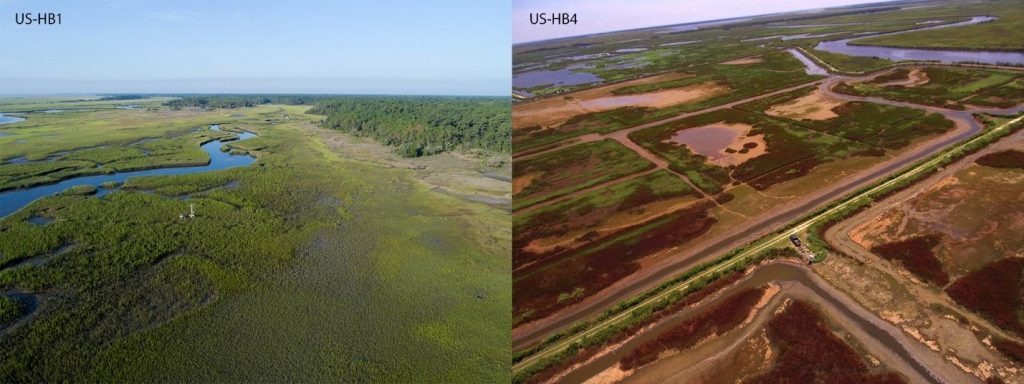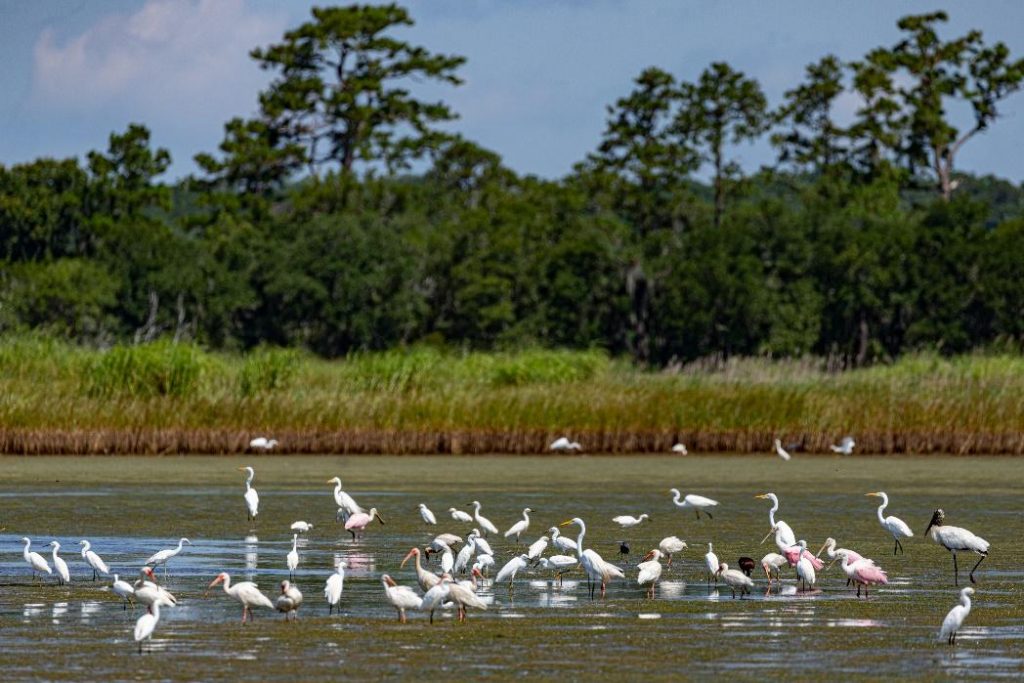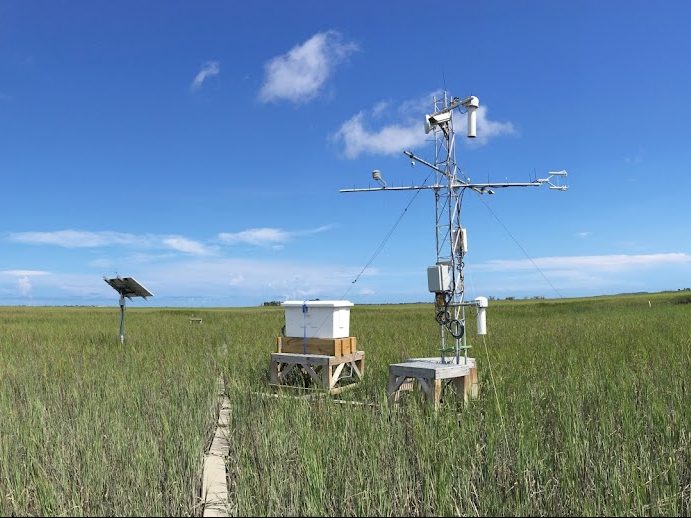The ongoing rise in atmospheric methane concentration creates global urgency towards understanding sources and sinks and potential interventions to reduce methane emissions. Wetlands are significant sources of methane and many open research questions remain surrounding the abiotic and biotic controls on landscape scale methane fluxes, including the potential for land management to reduce emissions. To that end, the O’Halloran Lab at Clemson University operates a pair of eddy flux towers (Figure 1) in wetlands as part of a growing cluster of four towers in coastal ecosystems in South Carolina. The North Inlet Crab Haul Creek (US-HB1) tower (Figure 2) was established along a long-term monitoring boardwalk of the North Inlet Winyah Bay National Estuarine Research Reserve (NI-WB NERR) in collaboration with Dr. Erik Smith of the University of South Carolina in 2017. North Inlet is a euhaline salt marsh with a 1.5m tidal range and dominated by Spartina alterniflora. As part of AmeriFlux’ Year of Methane, the AmeriFlux Management Project Tech Team has loaned a LI-7700 to this site for 2021-2022. This effectively created a site pair with the Minim Creek Brackish Impoundment tower (US-HB4), which has operated with an LI-7700 since becoming operational in March 2020 (just before quarantine hit). US-HB4 is in an impounded, managed wetland whose history traces back to rice cultivation. The site is located in the Santee River delta, which was one of the major rice producing regions of South Carolina prior to the Civil War. Many of the dikes and water control structures (Figure 3) used historically to take advantage of tidal action for flooding and draining rice fields in lower estuaries are still maintained by landowners to manage wetland vegetation to provide habitat for waterfowl. These wetlands are also heavily used by shorebirds, wading birds (Figure 4) and alligators (Figure 5) and therefore have tremendous conservation value.
Taken together, these two towers are providing critical measurements that will provide new mechanistic understanding of the impact of sea level rise, tropical storms, variability in water level and salinity, and water level management on carbon cycling and greenhouse gas dynamics in coastal wetlands.
Acknowledgements: We are grateful to the NI-WB NERR staff and the Belle Baruch Foundation for working with us and hosting HB1 and Dan Ray and Bill Mace of Annandale Plantation for hosting US-HB4 and our partnership with the James C. Kennedy Waterfowl and Wetlands Conservation Center. Thanks also to Mike Kline, sensor technician at Clemson, for maintaining both sites.

Figure 1. Aerial views of the North Inlet flux tower (US-HB1) which is in the tall-form Spartina alterniflora zone along Crab Haul Creek and US-HB4 which is a managed, impounded wetland adjacent to Minim Creek, a branch of the Santee River. Photos by Erik Smith (left) and Tom O’Halloran (right).

Figure 2. Look away! A painful sight for any flux tower person. US-HB1 was blown over by Hurricane Dorian in September of 2019. The guyed aluminum tower, slightly corroded from salt water, snapped at the base. The team had time to remove most of the sensors before the storm. The tower was built back better and stronger and operational by December, 2019.

Figure 3. Ph.D. student Lucas Clay stands next to the gate of a trunk at US-HB4, a type of water control structure that has been in use since rice cultivation was established in South Carolina in the late 17th century. The original technology is thought to have been invented in West Africa and brought to the U.S. by enslaved people who cleared the swamps and created the rice fields.

Figure 4. Several species of wading birds feeding in the impounded wetland at US-HB4 (great egret, snowy egret, wood stork, roseate spoonbill, white ibis, glossy ibis, little blue heron)





No Comments
Be the first to start a conversation